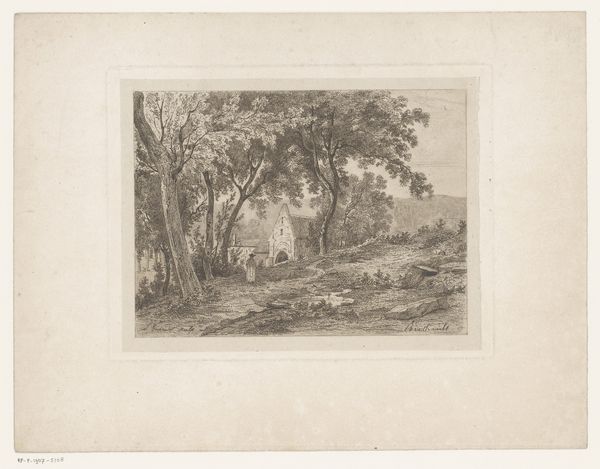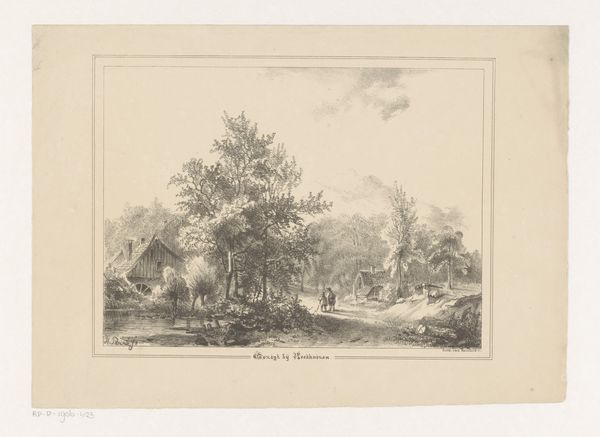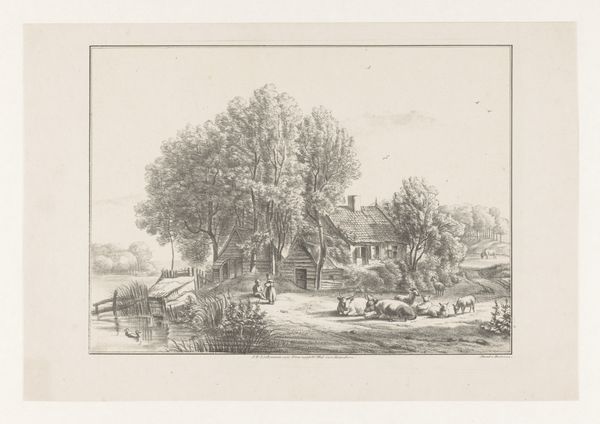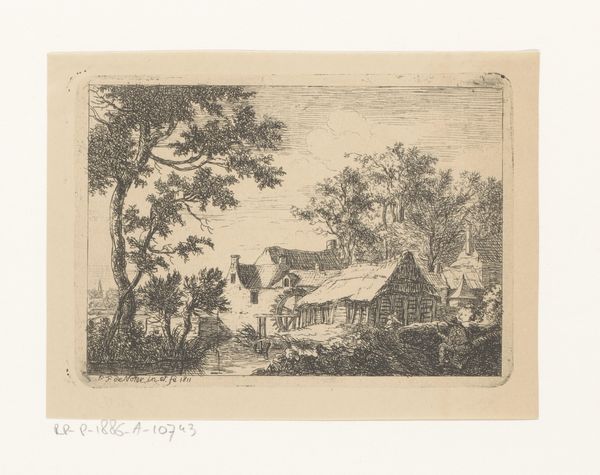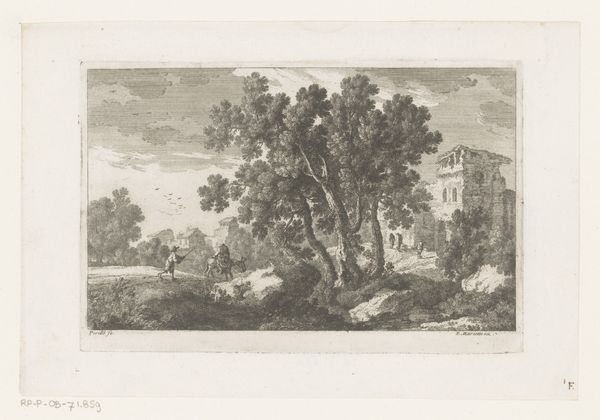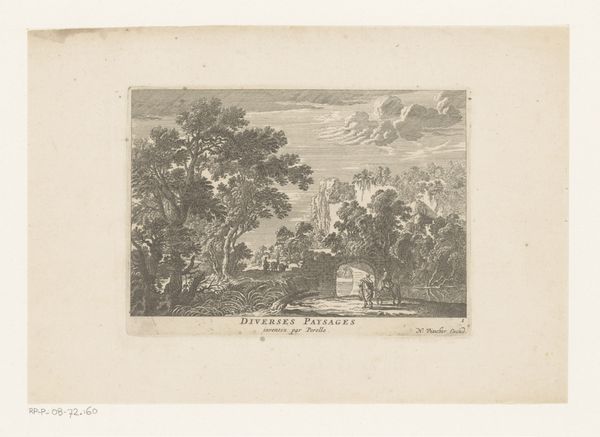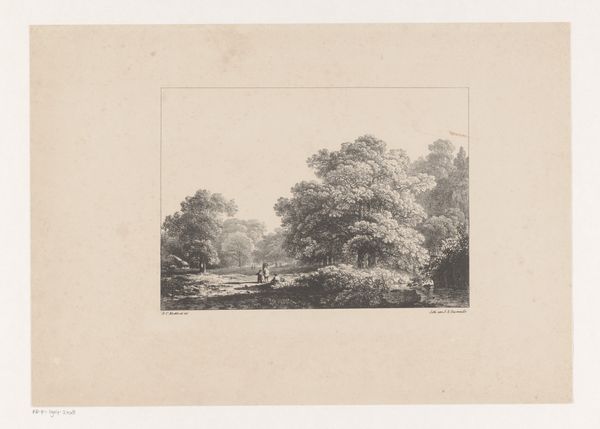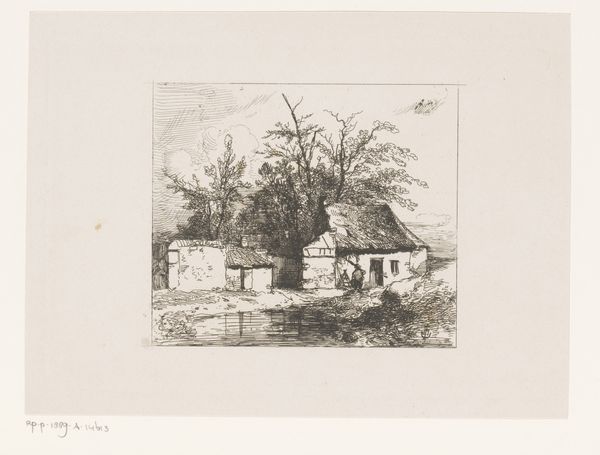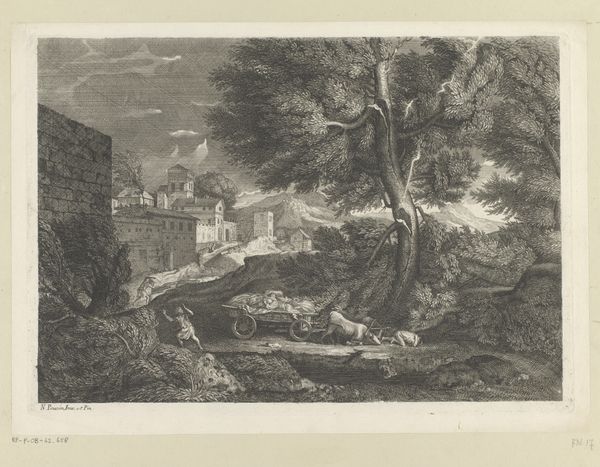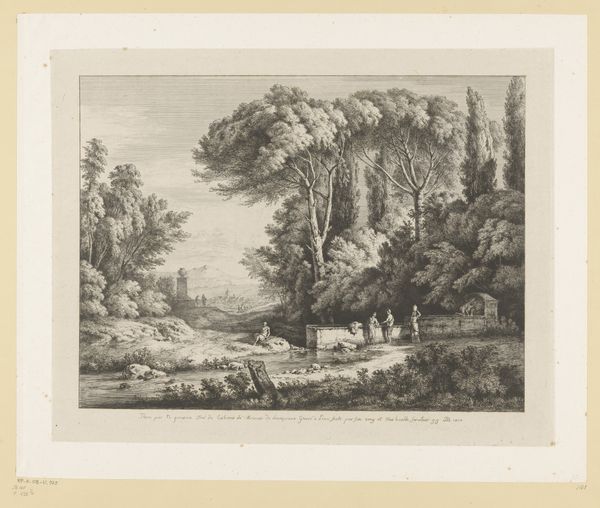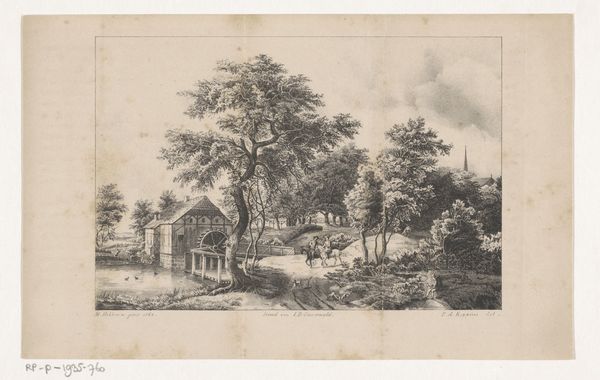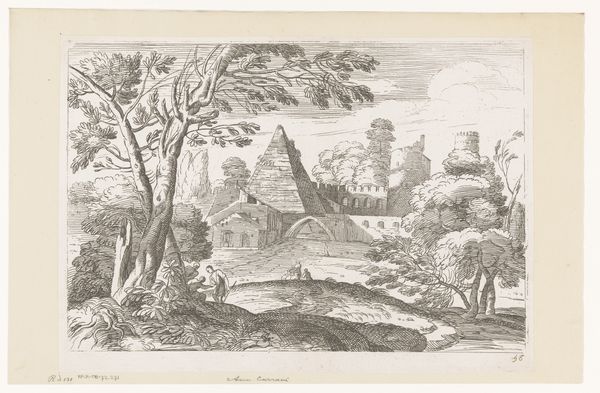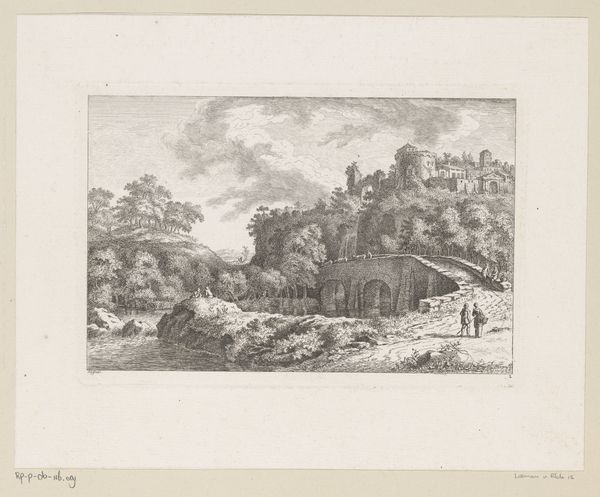
Omgewaaide boom bij het Paviljoen, na de storm van 28 mei 1860 1860
0:00
0:00
drawing, pencil
#
drawing
#
16_19th-century
#
landscape
#
pencil
#
realism
Dimensions: height 165 mm, width 245 mm
Copyright: Rijks Museum: Open Domain
Hendrik Last created this print of a fallen tree by the Pavilion after the storm of May 28, 1860. A powerful tree, uprooted and overturned, dominates the foreground, leaving a scene of destruction. The tree here serves as a potent symbol of nature's force and the transience of life, and its fall evokes a sense of chaos and disruption. We can trace this motif across different cultures, from ancient myths where uprooted trees symbolize lost worlds or the destructive power of gods, to modern eco-art where fallen trees represent environmental devastation. Consider the enduring image of the tree of life, a symbol of interconnectedness and vitality, found in countless cultures from the Norse Yggdrasil to the sacred trees of the East. When such a potent symbol is inverted, as it is here, the emotional impact is profound, tapping into our deepest fears of collapse and loss. This image serves as a reminder of the cyclical nature of destruction and renewal.
Comments
No comments
Be the first to comment and join the conversation on the ultimate creative platform.

